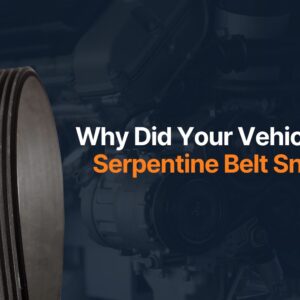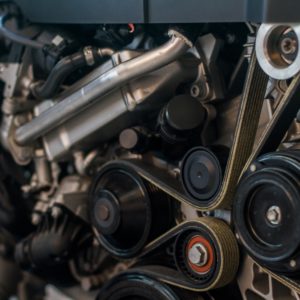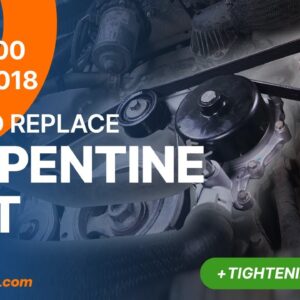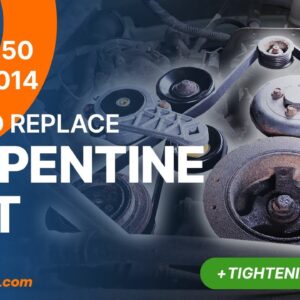It’s never a good sign if you hear any unusual sounds from the engine bay, especially if it’s a squealing noise when accelerating. In most cases, this high-pitched squeal points to a pressing issue with your vehicle’s fan or serpentine belt. However, belts can also squeal when the engine is just idling, so there’s that.
Why Your Vehicle’s Belt Squeals When Accelerating
A fan or serpentine belt noise when accelerating is typically caused by one of the following issues:
Contaminated Belt
When oil, coolant, or other fluids leak from the engine, the belt will likely lose its grip on the accessory pulleys, causing it to slip and make a squealing noise. In some cases, these contaminants can also cause the belt to wear faster.
Worn Belt
Car belts wear over time and typically need a replacement every 60,000 to 100,000 miles. If they aren’t replaced, they can crack or stretch and eventually lose tension. Loose or cracked belts can slip from the pulley and produce an unpleasant squealing sound.
Misaligned Pulley
A misaligned pulley is another possible cause of a squeaky serpentine belt.
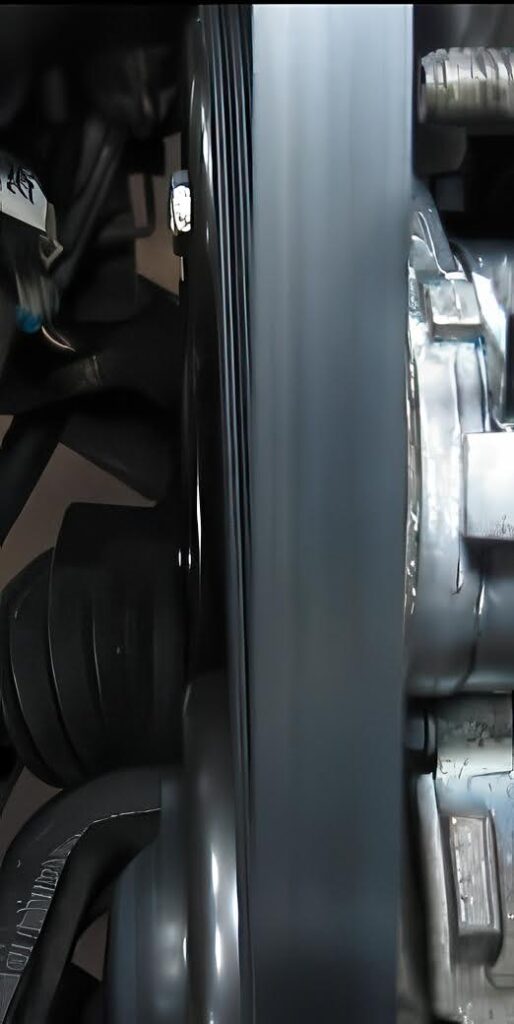
If you recently had your belt or pulley serviced, then it’s likely your mechanic installed it incorrectly. Improper installation of the belt, pulley, or tensioner can result in misalignment and squealing noises in the engine bay.
Damaged Pulley
A damaged pulley won’t be able to keep the serpentine belt in place, resulting in a loose, squeaky belt. If the pulley bearing (including the water pump) fails so that the pulley is out of line, the belt may squeak or it may not.
Tension Issues
Some platforms don’t have spring-loaded belt tensioners, and if you use a cheap belt and tighten it properly, it can stretch, get loose, and begin to squeak. You’ll usually notice it most right after you start the engine when the alternator is working hardest to recover the charge.
If the belt is too tight, you can destroy the bearings components like the A/C compressor or water pump. If the belt stretches and gets loose or is too loose to begin with, you’re likely to hear a squealing noise coming from the engine bay.
How To Diagnose Fan Belt Noise When Accelerating
It’s important to diagnose and fix a noisy fan belt as soon as possible to avoid any further damage. Here are helpful tips on how to diagnose and fix a noisy car belt:
Inspect the Belt
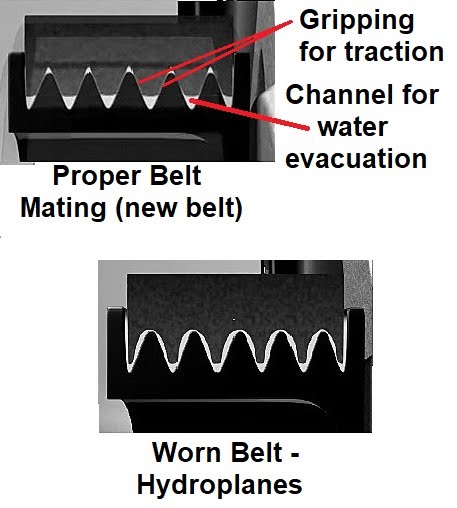
It’s best to start with a visual inspection. Check the belt for any signs of damage, such as cracks and frays, and replace it if necessary.
Check the Tension
You can use a gauge specifically designed to check belt tension on platforms that don’t have a spring-loaded belt tensioner. The belt tensioner has internal parts (damper and bushing) that can wear out and cause the tensioner to bounce while the engine is running. If you have a bouncing tensioner, replace it along with the belt.
If a manually adjusted belt is too loose or tight, you might be able to simply adjust the belt, but cheap belts may need to be re-adjusted until they stop stretching before the squeak will ever go away. Just make sure to follow your manufacturer’s specifications and buy good quality belts.
Verify Pulley Alignment

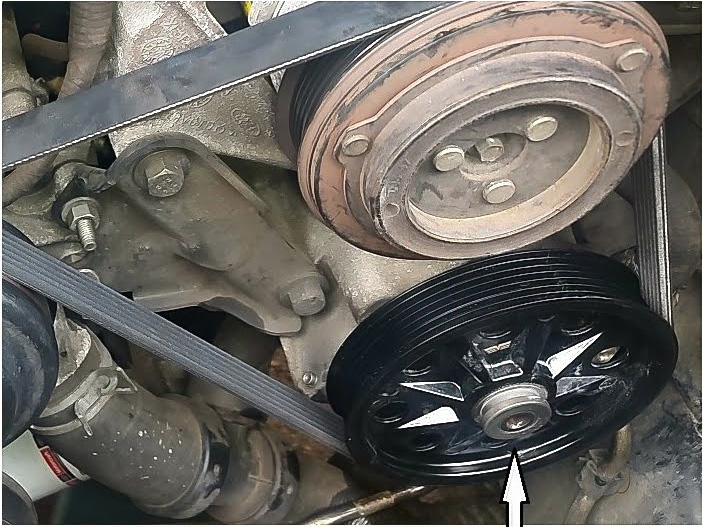
Check the pulleys for any misalignment. If a belt or pulley is misaligned, you’ll have to realign it. This typically involves loosening the pulley system, adjusting the belt, and tightening the components according to your manufacturer’s specific instructions.
Clean the Belts and Pulleys
After addressing the leakage in your engine, don’t forget to clean the belts and pulleys. You can use a vacuum or commercial cleaner to get rid of the coolant, oil, or grease.
Warning: If you spill any kind of fluid on belts other than clear water, it causes problems. Oil will make a belt slip. Coolant will make the belt noisy.
Poor Belt Design
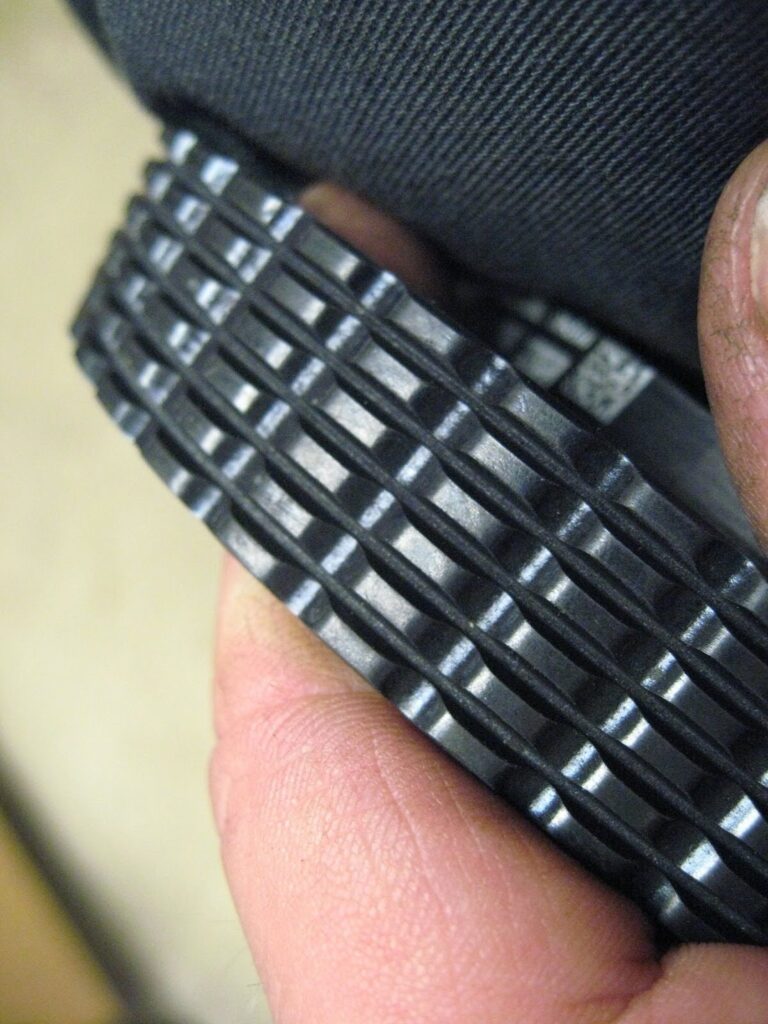
Fan Belt Noise FAQ
What Does a Faulty Fan Belt Sound Like?
You’re likely to hear a high-pitched squeaking noise from the engine bay when you accelerate, which is usually caused by the rubber belt slipping on the pulley. In some cases, however, a faulty belt can also produce other types of sounds, such as a chirping or growling noise.
How Do I Know if My Fan Belt Needs Replacing?
Squealing noises and flickering lights are common signs of a failing fan belt. You can also perform a visual inspection every six months, and if you notice any cracks, then it’s time for a replacement.
Can the Weather Affect Fan Belt Noise?
Yes, weather conditions can affect your car belts. Cold weather can cause the rubber belts to turn stiff and brittle, creating a squealing noise as you drive. Because of this, you might have to replace your vehicle belt more often if you live somewhere with cold temperatures.
Any information provided on this Website is for informational purposes only and is not intended to replace consultation with a professional mechanic. The accuracy and timeliness of the information may change from the time of publication.



